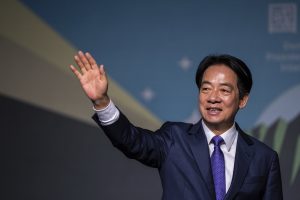In January, Vice President Lai Ching-te (also known as William Lai) of the Democratic Progressive Party (DPP) was elected the next president of Taiwan. This election marks the first time since Taiwan’s democratization that the same party will serve three terms. His inauguration will be held on May 20.
Lai’s election victory has put the focus on what the incoming president has said about Taiwan’s relations with China and how to frame the 1992 Consensus, which China repeatedly has asked Taiwan to affirm.
In Taiwan, 60 percent of the population wants to maintain the status quo, and less than 10 percent favors reunification with China. The point of contention for the people of Taiwan is not the issue of unification or independence, but how to maintain the status quo, and it is in light of this that the relationship with China is discussed. The likely problem here is the handling of the “Republic of China.” As is well known, after abandoning the “Mainland Counterattack” policy, former President Lee Teng-hui (1923–2020) described the relationship between the Republic of China (ROC) and Taiwan as the “Republic of China in Taiwan,” meaning that the ROC is located in Taiwan. This represented that the ROC is no longer aspiring to Chinese unification but is located in Taiwan.
However, there was a certain distance between the ROC and Taiwan, just as the ROC was described as being in the space of Taiwan. This is why Lee abolished the administrative functions of Taiwan Province, which existed between the ROC and Taiwan, while leaving intact the administrative functions of Fujian Province (ROC), under whose jurisdiction the Kinmen and Matsu Islands fall.
In contrast, outgoing President Tsai Ing-wen used the expression “Republic of China, Taiwan” in 2019. This denoted an equivalence between the ROC and Taiwan, suggesting that the two are integrated. That is why the Tsai administration abolished the Fujian Provincial Government within the ROC. This would indicate that the space governed by the ROC is Taiwan, and that Taiwan and the ROC are one and the same. Yet Tsai did not deny that the ROC was established in China in 1912, and equating the ROC with Taiwan still requires a leap of logic. In any case, it can be claimed that Tsai sought to maintain the status quo without abandoning the ROC framework.
In this way, the tendency to equate the ROC with Taiwan and trying to maintain the status quo on that basis is generally referred to as “Republic of China (ROC) independence” (华独). The question is whether the Lai administration will maintain this “Republic of China, Taiwan.” If the new president chooses not to maintain it, then he will likely opt for so-called “Taiwanese independence” (台独), which says that Taiwan is Taiwan.
Recent debate has been about the relationship between Taiwan’s new government and the People’s Republic of China (PRC), but the first thing to be discussed within Taiwan is likely to be the position of the “Republic of China.” The ROC’s old customs can presently be found engraved everywhere in Taiwan. What will the new administration do about this? If the Kuomintang (KMT) had won the election, it would have been difficult for the KMT to deny the ROC or remove its old customs. However, it is quite conceivable that the new Lai administration will move in precisely that direction.
The PRC does not seem to distinguish between “ROC independence” and “Taiwanese independence.” It is probable that both are equally unacceptable as both contain the word “independence.” That is likely why Beijing is so staunchly opposed to the DPP in its entirety. However, the handling of the “Republic of China” in Taiwan is important for Taiwan, and it also affects its relationship with China. This is because the element of “Republic of China” is all that provides a point of contact with “China”; without it, “Taiwan is Taiwan.”

































